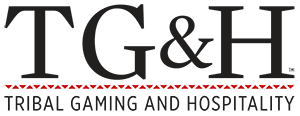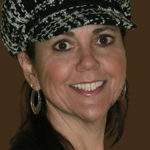Celebrating the Tribal gaming community and its workforce who are dedicated to improving the lives of their communities
We all have the power to change lives and make the world a better place. Not feeling empowered? Read on. Look around. Daily there are individual acts of kindness, homegrown movements, and corporate initiatives that make a difference. From the gal who delivers fresh fruits and vegetables to elders in remote tribal reservations, to the elementary school kids who write letters to our men and women overseas for the holidays, to the casinos that provide shelter to first responders or donate a much-needed ambulance or medical equipment to the community. It happens all around us, every day.
And at the very heart of any act of giving is the one person who realizes, “I can help. I can change this situation. I’ve got an idea. This is not okay. Why not?” It’s that one person who will take the first step to make someone smile, fill a hungry belly, or change several lives. There’s that one person who starts the ball rolling.
This month, Raving is celebrating the Tribal gaming community and its workforce who are dedicated to improving the lives of their communities. We’re standing up for those who have given their time and their hearts to their employees, their communities, their elders, their youth, their shareholders. Read more about the Tribal Spirit of Giving Celebration and Keynote Luncheon here.
We’re honored that we have “one of those people” who said, “I can help” as our keynote presenter during Raving’s 20th National Indian Gaming Analytics & Marketing Conference at Choctaw Casino Resort, Durant, OK.
Please meet Sam McCracken, Visionary and General Manager of the Nike N7 Program:
Chris: For the folks who are not familiar with the N7 program, what’s your elevator speech? What would you want every household to know about N7?
Sam:Well, the mission of N7 is to inspire and enable 1.5 million Native American and Aboriginal youth to support physical activity. How we intend to do that is through the sale of the N7 collection, and the proceeds from the collection go directly back to the fund. The fund has granted $4.6 million in grants since 2009 and affected the lives of about half a million kids to date. If I was asked, “What is N7?” – I’d say it’s really a brand that encourages and inspires Native youth to dare to rise.
Chris: Okay. Your N7 products are found right alongside other Nike products in retail stores, correct?
Sam:Yes. Yeah, so the distribution strategy for those products, to raise money for the fund, is pretty unique with regard to that we do have it on Nike.com. We have our own landing page and we’re part of the NikePlus app. Which is the new technology that we’ve released about how we engage consumers with our products, as well as we have a very unique wholesale partnership with Hibbett Sports in the US and Sport Chek in Canada.
Chris: Is the look of the N7 products different than the other Nike products?
Sam:Absolutely. The look and feel of our products is really, truly inspired by our athletes, our athlete ambassadors, who have all agreed to the mission and vision, which is to inspire Native sport for Native American youth. The rest of this current collection that is in the market, and holiday ‘17, Native American Heritage Month, was inspired by a young lady who is a basketball player by the name of Jude Schimmel, from the Confederated Tribes of the Umatilla Indian.
Jude is a tremendous inspiration to young girls all across Indian country. Every collection is inspired by a different Nike N7 athlete or ambassador.
Chris: Okay, so compared to the other Nike products, what do people say that they like most about the N7 products? Sam:Well, I would say that would be the graphic story, because graphics are an important part of our collection. When we have amazing graphics on the products that really speak to the heart of our consumer and our native communities.
Chris: When you first approached Nike with a business plan to help Native Americans through their programs, you were working in the warehouse. Did you have marketing experience?
Sam:No, I did not. I was just a guy with a lot of passion and a vision, and Nike believed in me. A lot of my background and my organizational skills were from being a high school basketball coach.
I just kind of relied on that skill set to help get me through, and then to be really candid with you, Nike gave me every opportunity to succeed. They gave me the training classes that I needed, public speaking training, media training, marketing training, strategic planning.
Chris: What is one of the biggest lessons that you’ve learned through this journey, about yourself, about life, about people?
Sam:Yeah, when I was speaking to some folks yesterday, I believe that the creator works in very mysterious ways. And there’s no rhyme or reason for why I was anointed the guy who was given the opportunity to write this plan. Things just happen. And I didn’t have this large vision of this brand, logo, product, and athletes. That was never part of the equation when I originally wrote the plan. It was really about the community I care about, the Native American community.
I was telling these folks yesterday that I was not working on behalf of myself or my family, I was working on behalf of the 4.5 million Native American Indians in the United States. And if I failed at my job, I failed them. And so I was really driven by that mentality of I have to do well in this role because I’m the instigator of the opportunity. So if I fail at this opportunity, I’m failing our native community. Because now tribal communities have a very unique opportunity that most communities don’t have, which is direct access to the Nike brand.
Chris: As General Manager, I’m sure that you get tied down with meetings, paperwork, emails, and people calling you for interviews. How do you keep in touch with these kids and the communities that you serve? How do you make time for that?
Sam: Well, you know, it’s really important that I’m accessible. I think I’ve prided myself on that since the very beginning. And you can ask all the people who know me out in the community, that they know that they can pick up the phone and call me. I try to attend as many events out there that I can.
So, these different events where I know that Native youth are going to be, I’ve got to make myself available and accessible. And it has been very humbling to see how receptive these young people are and appreciative of me, because it was never my intent to have this celebrity status. These college kids, they come up to me, they want to take a picture with me. That’s very humbling for me; it was always about community first.
Chris: Was there any one moment that you said, “This is why I work so hard, this is what brings it all together for me”?
Sam:Well, I think that I could capture several moments. Or I could go back to an email that I received from an individual who was wearing the Air Native shoe and thanked me for saving his life. I had nothing to do with saving his life. We created a product that worked for him, and he was able to get out and be more active. And now he’s overcome the battle of type 2 diabetes.
Chris: What do you see as the biggest challenges to the Native community today? And do you feel that your company and companies like NB3F are headed in the right direction? What more do you need?
Sam:I just think it’s bringing more awareness to the challenges. I was just talking with Notah. We were chatting in regard to the work that we want to continue to do together, through his foundation. And really address childhood obesity and type 2 diabetes with our kids. And for us, at N7, we really want to be an inspiration for that work. And that’s why our tagline is called Dare to Rise, because we’re really challenging our kids to rise above whatever is holding them back, to become the person they know they can be. And that’s what we continue to do.
Chris: Raving has been involved with NB3Fit for the last two weeks. It was a really big deal, an “event” to get all these kids moving. Does it come down to something as basic as having the money to fund regular exercise programs?
Sam:That’s what the N7 fund grant program does, it creates opportunities for communities to apply to recieve grants for $10,000 to $20,000 dollars (or larger) to get native youth moving.
I think it comes down to having somebody in those communities be their champion. Sam McCracken can’t be everywhere, Notah can’t be everywhere to inspire this to happen. You need that one person in the community to say, “Hey, I live here, I care about these kids, and I want to put together the infrastructure that’s going to allow them to have more access to physical activity.” And with the correct infrastructure, that community champion can then apply for the funding to make it happen.


